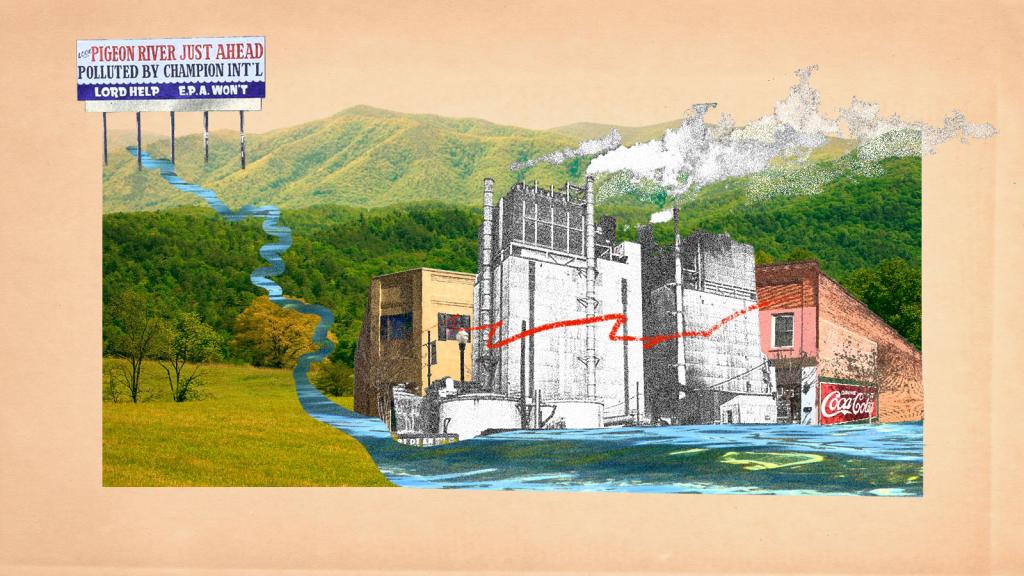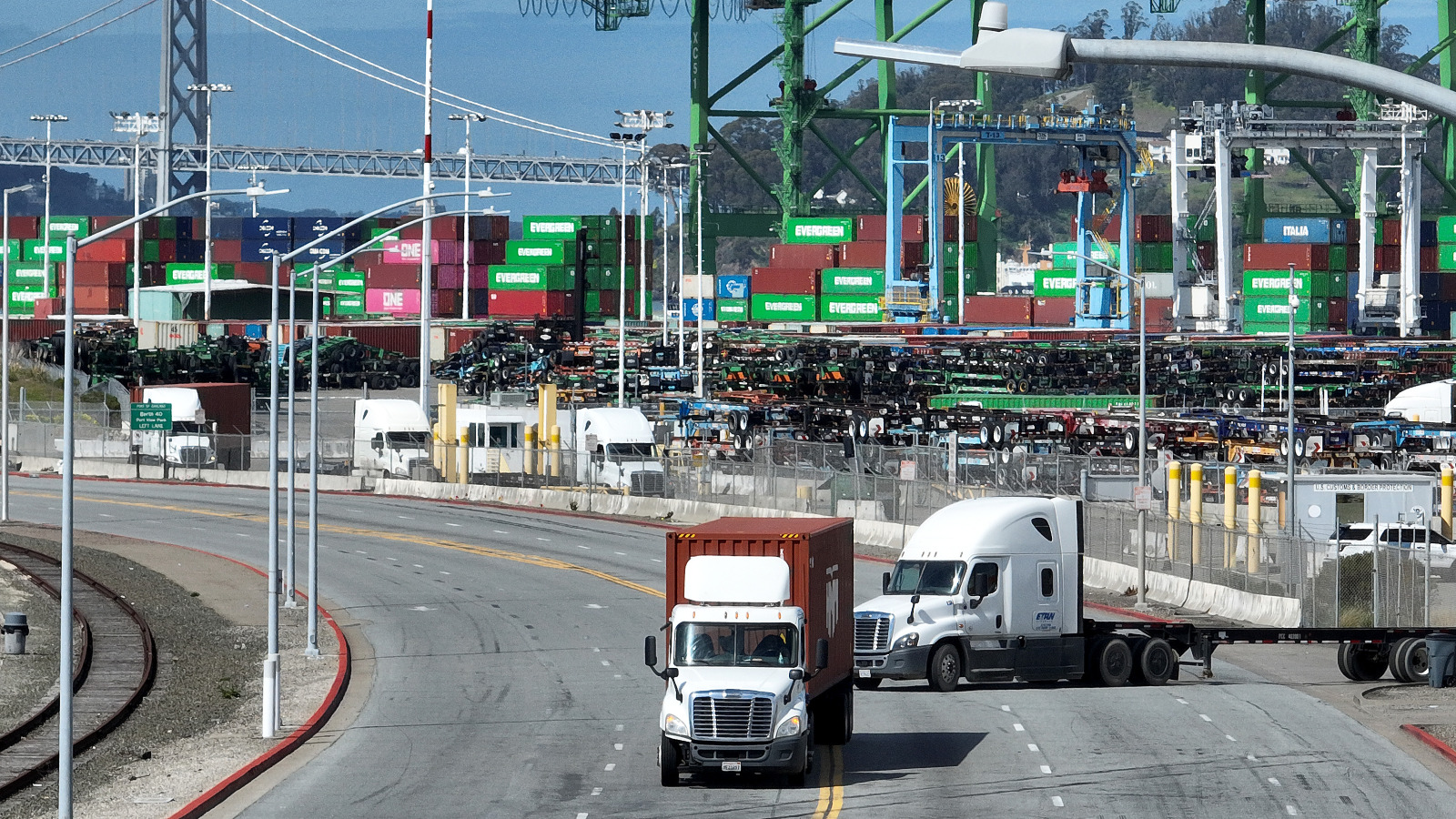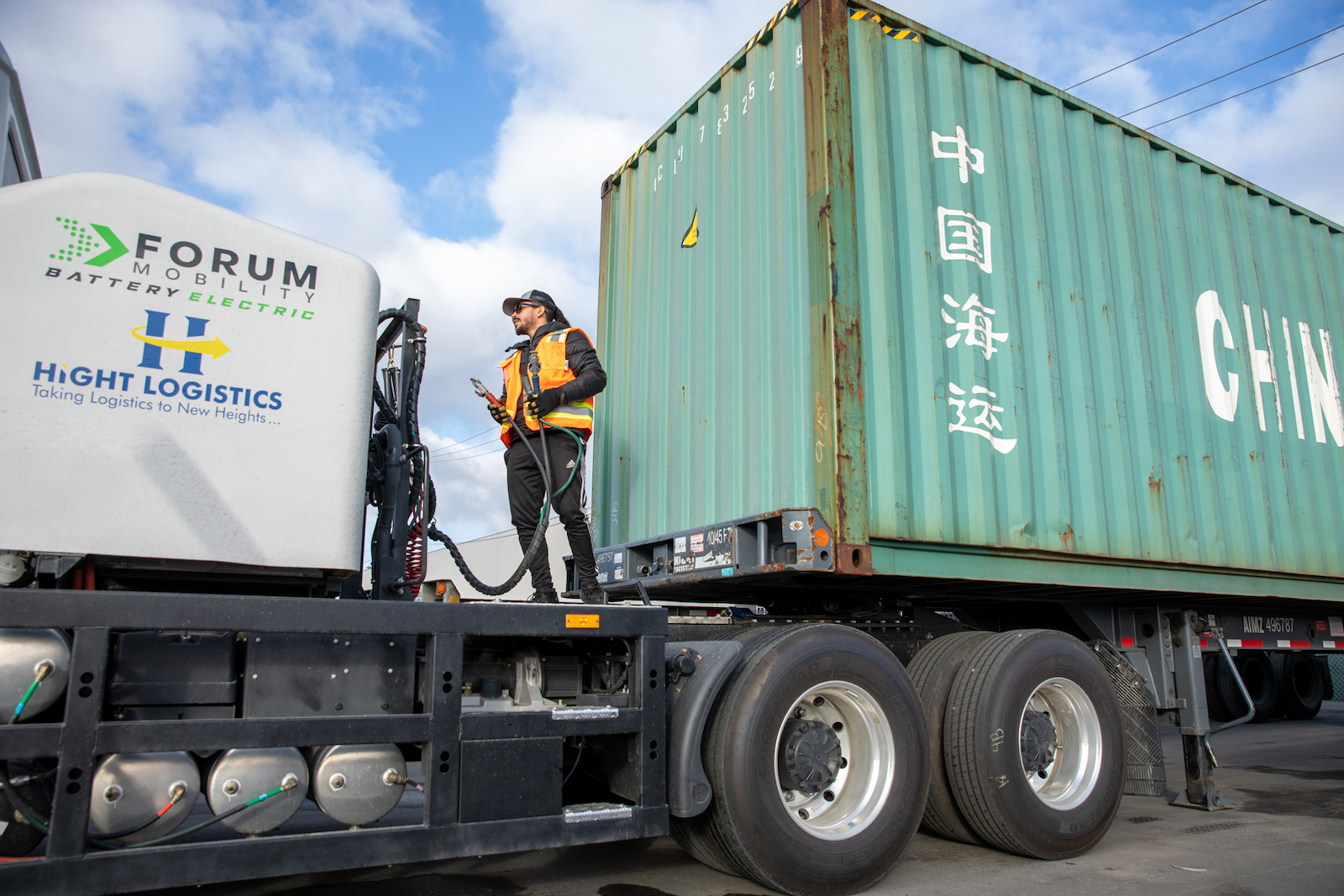California just cracked down on pollution from transportation in two major moves, part of an effort to improve air quality and cut carbon emissions at the same time.
On Friday, the California Air Resources Board unanimously approved a rule that would ban the sale of diesel big rigs in the state by 2036. The mandate, which will apply to about 1.8 million trucks — including those operated by Amazon, UPS, and the U.S. Postal Service — is reportedly the first in the world to require trucks to ditch internal combustion engines. The news came one day after California became the first state to adopt standards to limit pollution from trains.
The regulations are intended to improve air quality and trim carbon emissions from transportation, the source of about half the state’s greenhouse gases. Trucks and trains spew diesel exhaust, full of soot that contains more than 40 cancer-causing substances, responsible for an estimated 70 percent of Californian’s cancer risk from air pollution.
The trucking rule requires school buses and garbage trucks to be emissions-free within four years. By 2042, all trucks will be required to be “zero-emission,” meaning there’s no pollution coming out of their tailpipes. The deadline comes sooner for drayage trucks, which transport cargo from ports and railyards to warehouses — typically short routes that require less battery range. New drayage trucks must be “zero-emission” beginning next year, with the rule applying to all drayage trucks on the road in 2035.
Currently, medium and heavy-duty vehicles account for a fifth of greenhouse gas emissions statewide. In August, California clamped down on pollution from passenger vehicles with a plan to end the sale of new gas-powered cars in the state by 2035.
People breathing pollution from freeways and warehouse hubs have long called for stricter air standards. In the port cities of Long Beach and Los Angeles, some 6,000 trucks pass through every day, exposing residents to high levels of ozone and particulate matter, pollutants linked with a range of problems including respiratory conditions and cardiovascular disease. Long Beach residents who live the closest to ports and freeways have a life expectancy about 14 years shorter compared to people who live further away.
The trucking industry, however, argues that California is moving to electrify trucking too fast, and that the state’s strict rules could drive small operators out of business. Battery-powered trucks can cost up to half a million dollars including taxes and fees, more than twice what a diesel truck costs, although the federal tax credits and state rebates for electric big rigs soften the blow. Rail operators also say the regulations on train pollution are coming too soon and could cause the price of goods to spike, with the industry arguing that “there is no clear path to zero emissions locomotives.”
According to the new rules, the state is banning locomotive engines that are more than 23 years old by 2030. It also bans trains from idling for more than 30 minutes, provided that they are equipped with an engine that can shut off automatically.
The stage for the rule was set by a single line buried in the Biden administration’s proposed auto emissions rules, in which the Environmental Protection Agency said it was considering allowing states to regulate locomotives. Still, California’s new rules may spark a legal battle with the rail industry, which argues that the state doesn’t have the authority to make such sweeping changes.
Though railroads only account for about 2 percent of the country’s carbon emissions from transportation, switching to trains powered by batteries or hydrogen fuel cells would provide some benefits in the effort to tackle climate change. The public health gains would be even bigger: The California Air Resources Board estimates its new rules for trains, passed on Thursday, would lower cancer risk in neighborhoods near rail yards by more than 90 percent.
“This is an absolutely transformative rule to clean our air and mitigate climate change,” Liane Randolph, the chair of the air quality board, said ahead of the vote on the trucking rules on Friday. “We all know there’s a lot of challenges, but those challenges aren’t going to be tackled unless we move forward … if not now, when?”
The new mandates represent a big change in California’s approach to climate policy from two decades ago, when most environmental groups treated global warming and air quality as separate problems that required separate solutions. Back then, the state’s climate policies actually diverted resources away from addressing local pollution to limit carbon emissions.
Environmental justice advocates in California, among the first to use the phrase “climate pollution,” were some of the first to argue that the two problems were inextricably linked and needed to be addressed together. The new rules that limit pollution from transportation are a sign that the state has come to embrace their perspective.




